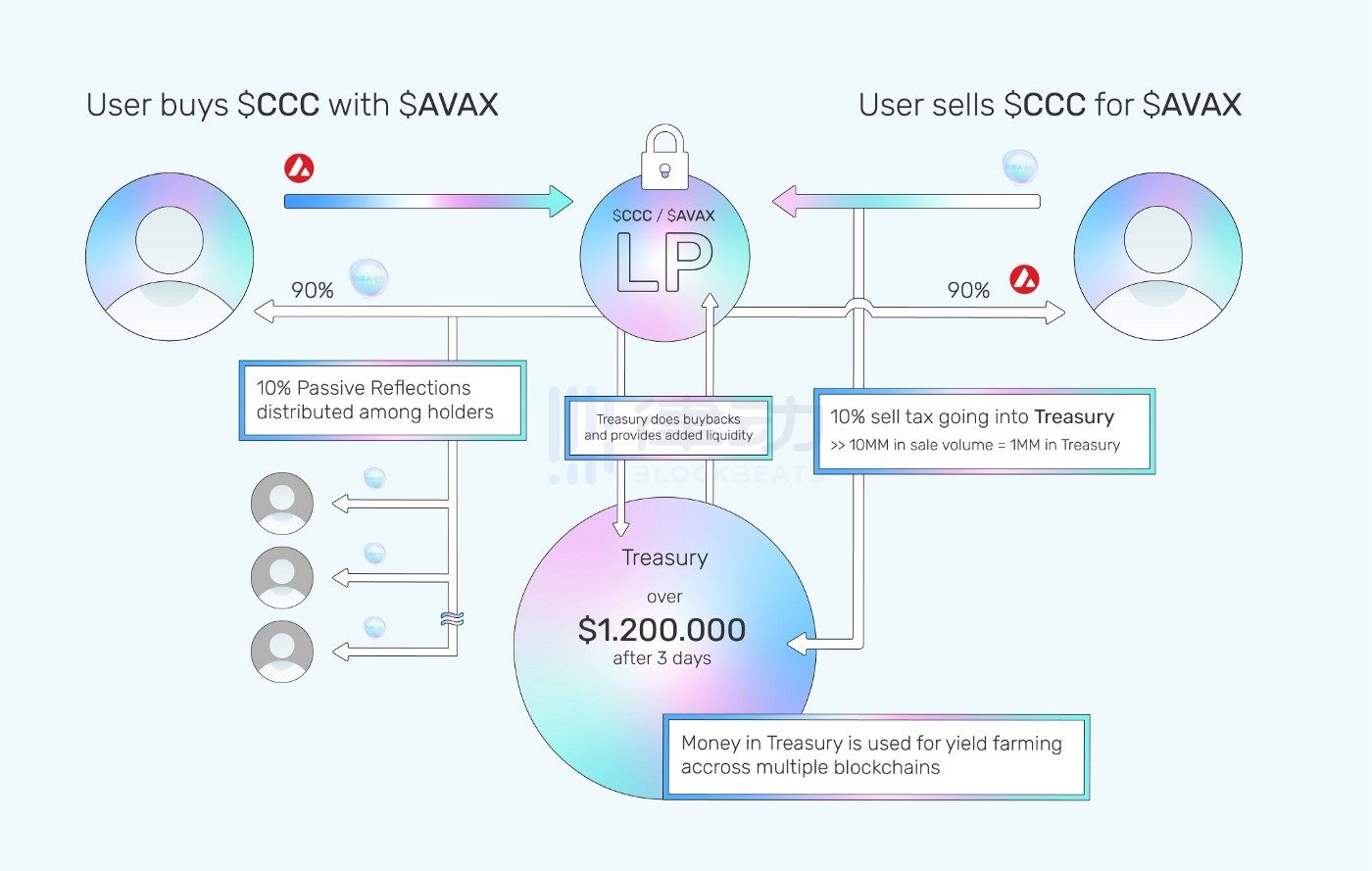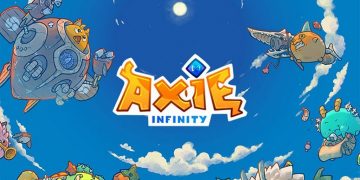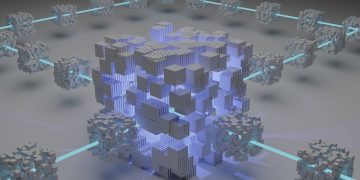After last year’s DeFi summer, the entire DeFi field entered a period of dormancy, and the prices of TVL and Token declined significantly. But the good news is that DeFi has not stopped innovating. In less than half a year, DeFi 2.0 was born in the way of “protocol to control liquidity”, trying to solve the problem of unstable liquidity of 1.0. Now, DeFi 2.0 has not even stood firm, and DeFi 3.0 under the banner of “Farming as a service” has already been killed. So what is the difference between DeFi 3.0 and 2.0? What problem does it solve?
DeFi 3.0 – Money Lego for Leeks
In the field of DeFi, we often see the word – “money lego”. This metaphor vividly captures the characteristics and potential of DeFi. For this field, it is difficult to have a future by fighting alone, only like building blocks Together, they can build a huge empire. DeFi 3.0 is built on the basis of DeFi 1.0 and 2.0, and provides efficient and professional Farming strategies as a service to ordinary people who are relatively unfamiliar with DeFi or Crypto, that is, “farming as a service”.
Multi-Chain Capital (MCC), built on Ethereum, was the first project to make this wave. Users provide funds for the agreement’s treasury by purchasing MCC Tokens, and projects use these funds to participate in other various DeFi projects, and use the income from Yield Farming to repurchase MCC to promote the value of Tokens. In other words, the value of Token is an indirect mapping of the farming record of the protocol, and all users need to do is to hold the Token.

This concept does not sound very new. After all, Yearn Finance has provided similar services for a long time. However, after careful study of some representative DeFi 3.0 projects, we will find that they have indeed brought some new changes to DeFi:
Conform to the multi-span future and find the best choice for users
We will find that the names of DeFi 3.0 projects often contain words such as “cross-chain” and “multi-chain”. A year ago, it was not difficult to become a good “DeFi farmer”, because Ethereum occupied almost all the DeFi market, and the best profits must come from here. However, with the development of public chains such as AVAX, BSC, and FTM, today’s DeFi ecosystem has become extremely complex. Investors need to pay close attention to the industry and frequently transfer funds between various public chains to ensure the best results. return. Not to mention the novice who has just come into contact with DeFi, cumbersome operations, and higher and higher gas may directly shut them out. DeFi 3.0 solves this problem. Finding the best platform and formulating the best strategy is all done by the protocol. The only thing users have to do is to hold Tokens, and they don’t even need to pledge. It can be said that the acceptance threshold is directly removed.
Guaranteed benefits and more sustainable benefits
Readers who have read “Public Chain Outbreak vs Ethereum DeFi Weakness, Multicoin Capital Lianchuang tells you the connection behind” should know that one of the problems encountered by DeFi 1.0 is that institutions can rely on huge funds and complex algorithms to accurately attack The liquidity of mining pools has led to the continuous squeeze of retail investors’ income. In other words, giant whales have become a major obstacle on the road to the popularization of DeFi 1.0. In order to solve this problem, DeFi 2.0 controls the liquidity through the protocol itself, which ensures the stability of the liquidity, but it brings another problem, which is the sustainability of income. The editor of Rhythm mentioned in the article “APY 70,000%, DeFi 2.0 Dominated by OHM Forks” that many DeFi 2.0 protocols provide high APY that cannot be sustained for a long time in order to rapidly expand the vault. Due to the excessive dilution of Token, some protocols The lifespan is not even a week.
Contrary to 2.0, DeFi 3.0 adopts a compact Token design. Take Multi-Chain Capital as an example, whether buying or selling MCC, each transaction will generate a 10% slippage, of which 5% will be equally distributed to Token holders, and the other 5% will be put into the protocol Treasury to invest in Farming or provide further liquidity. In addition, unlike the 2.0 protocol, the repurchase policy of the DeFi 3.0 protocol is fixed, generally repurchased once a week, and most of the repurchased tokens are also destroyed. Taking MCC as an example, the tokens repurchased by this agreement now account for 35% of the total circulation, which provides a relatively strong guarantee for the sustainability of user income. More importantly, DeFi 3.0 projects basically have no private placement and no quota for team members, which further reduces the risks brought by Rug and giant whales.
OG and forks
Like DeFi 2.0, as soon as the concept of “farming as a service” came out, various forks began to bloom everywhere. Rhythm editors have sorted out some noteworthy DeFi 3.0 projects on various public chains.
Multi-Chain Capital(MCC)——ETH
Multi-Chain Capital is the “Pioneer of DeFi 3.0”. Its investment strategy focuses on cross-chain Farming in the DeFi ecosystem. Its latest V3 strategy deploys 90% of its funds in the Fatom public chain, and uses stable coins and low IL for stable mining. And three main areas of DeFi 2.0: use mainstream stablecoins with high liquidity (USDC, DAI, USDT) to yield farming on platforms such as Curve, with an APY of about 7-20%; mining FTM and linking FTM to stable TOMB, get The income is compounded, and the APY is about 451%; the APY can reach 80,000% by staking mainstream DeFi 2.0 protocols, such as Olympus DAO, Wonderland, Hector DAO, etc. In addition to Multi-Chain Capital, Reimagined Finance (ReFi) is also a DeFi 3.0 project worthy of attention on Ethereum.
Cross Chain Capital(CCC)——AVAX
Cross Chain Capital is a fork of MCC on Avalanche. It is more like a “fund DAO” that tries to invest and manage various assets other than Defi. CCC plans to enter the Metaverse and GameFi fields by accumulating blue-chip NFTs, Metaverse real estate, P2E leaseable assets, etc. and hopes to have a lasting impact on marketing, culture, and revenue in these fields. In addition, the CCC treasury will also be used to participate in private placements and IDOs in the cryptographic field to increase the treasury’s revenue.
In terms of Token use cases, CCC Token will be given the right to govern this “fund DAO” to ensure the security of user funds and the transparency of fund management. The team is also developing a Wrapped CCC linked to CCC Token to create its own lending service so that Token holders can get more benefits on the basis of “laying and winning”. In addition, CCC also intends to establish its own DeFi 2.0 project to expand the income source of the treasury.
Cross Chain Farming(CCF)——BSC
Cross Chain Farming is the first DeFi 3.0 project on BSC. Taking advantage of the BSC ecosystem, CCF will not only carry out Farming in the DeFi field, but also expand the business of decentralized Token issuance and listing, on-chain and off-chain security audits, etc. All these proceeds will be used for the return of CCF Tokens. Purchase and dividends to enhance the value of Token. At the same time, CCF will also establish a spot investment portfolio and issue airdrops to Token holders.
Scary Chain Capital(SCC)——FTM
Scary Chain Capital is a DeFi 3.0 project on Fantom, which aims to promote the construction of the FTM public chain ecosystem. SCC hopes to build its own Launchpad and issue airdrops for new projects on Launchpad to Token holders.
Empire Capital Token (ECC) – Cross-chain
The DeFi 3.0 project of the decentralized cross-chain exchange EmpireDEX. ECC intends to bridge the gap between the traditional finance (TradFi) and DeFi worlds, mainly involving on-chain and off-chain Yield Farming, developing synthetic stocks and packaging them as on-chain NFTs, deploying capital to technology startups in other fields, and participating in IPOs, etc.
Is DeFi 3.0 a future blue chip or a cake to eat?
In just two months, DeFi 3.0 has developed into a variety of “financial Lego” games, radiating to the entire encryption and even traditional financial fields centered on DeFi, trying to create an active financial ecosystem. But for now, these beautiful narratives are just visions. Most DeFi 3.0 projects have not been tested by time and the market, and neither the market value nor the team can be compared with the current mainstream DeFi projects.
In addition, the main source of income for these projects still relies on cross-chain DeFi Farming, including the immature DeFi 2.0, and the value of the protocol Token is only an indirect mapping of the treasury income, and the increase in value depends on the agreement’s repurchase policy, make it more susceptible to market volatility. As investors in the field of encryption, we cannot be blinded by the beautiful narrative and realize the huge risks associated with it. We must think about whether the emergence of DeFi 3.0 is a demonstration of the industry’s potential, or is driven by market impetuous emotions.




























